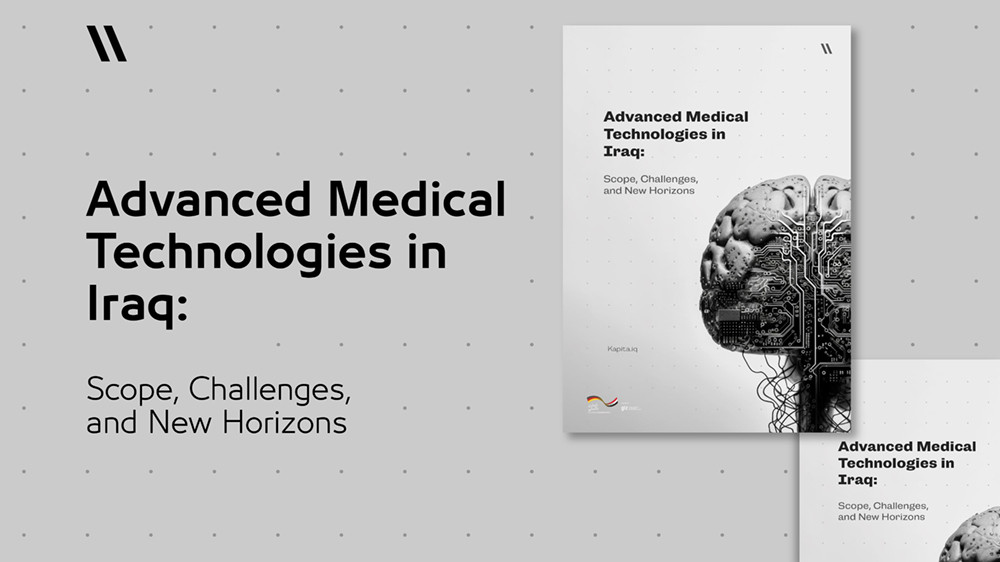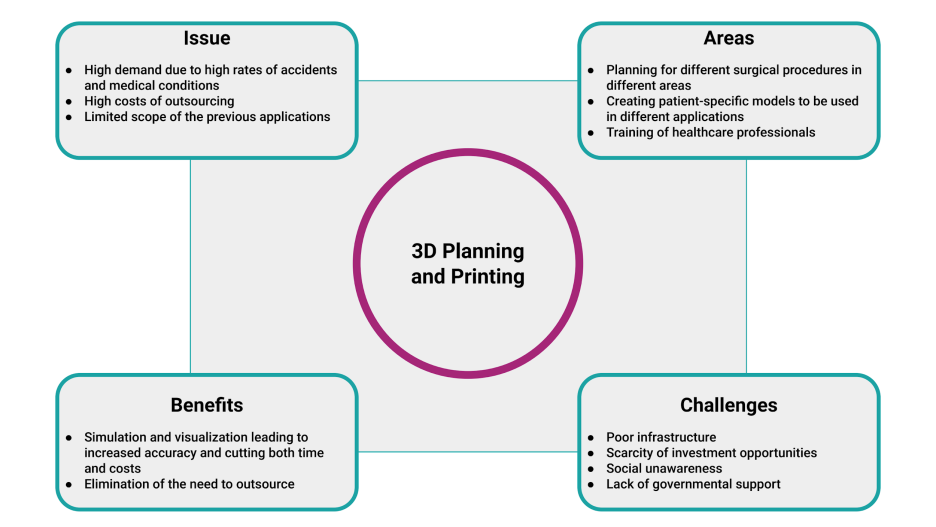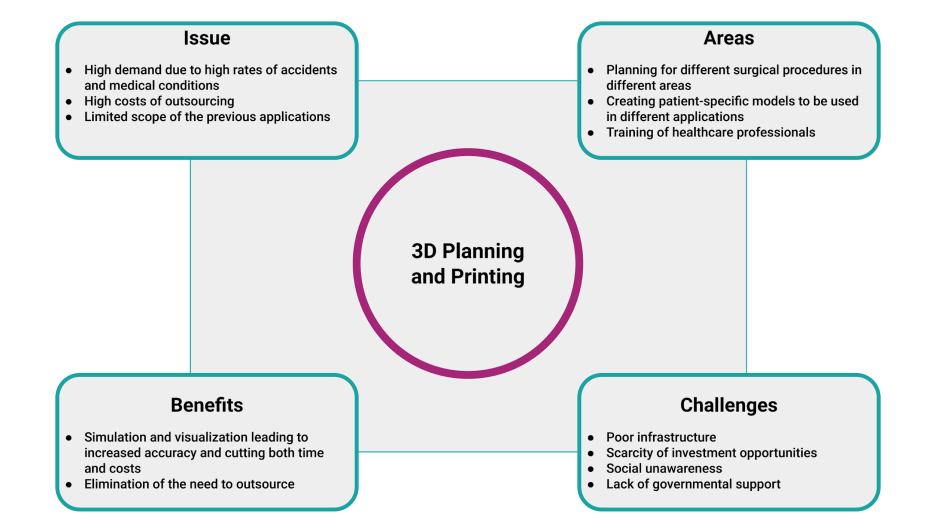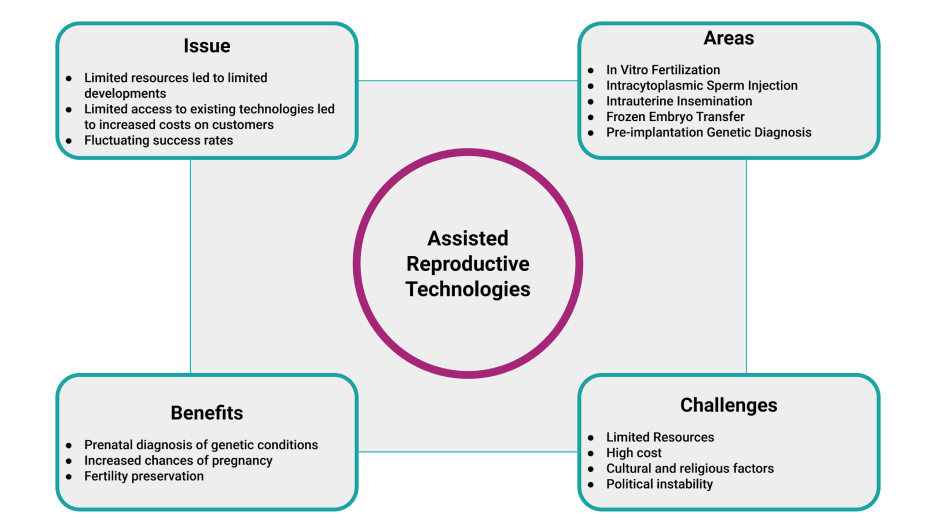This brief can be cited as:
KAPITA. "Advanced Medical Technology in Iraq: Scope, Challenges, and New Horizons”. September 15, 2023. https://bit.ly/3SoMPut

This report explores the Iraqi healthcare system and the advancement of medical technologies in particular. The Iraqi healthcare system dates back to the 1950s when the Ministry of Health was established. Rising oil production and prices embarked on a new era of rapid modernization across multiple sectors. The structure of the healthcare sector was created in the 1970s and remains at the core up until today, regardless of the multiple amendments that were applied to it in the following decades. Until the early 1980s, the healthcare sector reached the highest levels of medical services- 172 hospitals and 1200 primary healthcare clinics were established. However, decades of war and sanctions led to drastic damage and deterioration of infrastructure and services altogether.
The medical technology field is becoming increasingly important in healthcare over the past decade. Technology advancements are pervading every area of society, and healthcare is no exception. These advancements are revolutionizing the healthcare system as they offer easier and more accurate access to patients’ records, better access to healthcare, and a reduction in medical errors.
In this report, we cover the main aspects of medical technologies in Iraq, basing our insights on thorough research and opinions of experts in their respective fields. We address medical education, electronic mapping systems and records management, 3D printing, and fertility, all in regard to the medical technology field.
While the medical education of Iraq historically adopted the Western model of education, the current state does not reflect the professional and medical standards needed. The number of students is on the rise while facilities are minimally improved. Medical students undergo more software-based learning rather than hands-on experience, and they find less and less practical education in hospitals due to overloading. Technologies, however, can revolutionize the learning process through dedicated platforms and interactive tools, which enhances the learning experience- we thoroughly dig into that throughout the report. Integration of medical education technologies is challenging because of the limited resources and lack of privacy measures and education content unity.

Data indicates that the number of patients visiting hospitals on a monthly basis reaches 20,000. Management of patients’ records, especially paper-based patient charts, has become an outdated method, limited to a single location, and unshareable. It negatively impacts the quality and productivity of the healthcare provision.
This report delves into e-health solutions, based on experts’ opinions in the medical field. Electronic Managing Systems and Medical Records (EMR) come with an array of benefits, including but not limited to the high accuracy of data management, easier accessibility of patients’ data, and more informed decision-making. Despite the offers of advanced technologies, there are several challenges, including resistance to change, cost of transition, technological literacy, and more.
Moreover, 3D planning and printing is a cutting-edge technology with an annual growth rate of 16.0% in the forecast period of 2021 to 2028 and is expected to reach USD 2,390.78 million by 2028 in the MENA region. 3D has great medical applications and can play a major role in the production of prosthetics, hearing aids, and tissue engineering, as well as in dentistry-related solutions. Yet, the adoption of such technology is quite challenging due to poor infrastructure, lack of investment opportunities and social awareness, and absence of government support.

We also look into fertility in Iraq from different angles. Data show that fertility rates have fallen from 6.6 in 1980 to 3.4 in 2022. As a result, advancements in infertility treatments and technologies are showing rapid growth in the area. There are multiple active centers in Iraq offering different modes of treatment, including artificial insemination, in vitro fertilization (IVF), blastocyst transfer, intracytoplasmic sperm injection, and more. The fertility and assisted reproductive technologies (ART) have several benefits, such as limiting genetic diseases and fertility preservation, as well as business opportunities and job creation. On the other hand, these technologies are facing limitations: lack of resources in terms of advanced equipment and trained personnel, cost of treatment, and social and religious resistance.

We conclude with recommendations aimed at utilizing these emerging technologies in the healthcare system and the potential they present to this sector as a whole. The application of these advanced technologies presents a non-zero game where every party benefits. Medical education will notably improve; the quality of products and services offered to patients will reflect modern standards, and it will develop medical services in the private sector.
This brief can be cited as:
KAPITA. "Advanced Medical Technology in Iraq: Scope, Challenges, and New Horizons”. September 15, 2023. https://bit.ly/3SoMPut
Strengths, Weaknesses, Opportunities and Threats
A Brief of the Iraqi Agritech Potential and Challenges
Many of the big businesses we know today were only ideas. Ideas that tackle real needs can become successful businesses if they... read more
Scope, Challenges, and New Horizons